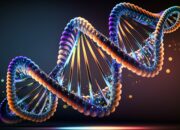The intricate interplay between avian navigation and quantum mechanics poses a compelling avenue of inquiry within the realm of modern biology and physical sciences. Birds are renowned for their remarkable migratory capabilities, often traversing thousands of kilometers with impeccable precision. This phenomenon raises an intriguing question: does noise, often perceived as a mere disturbance, play a pivotal role in facilitating these creatures’ navigation through a quantum lens? Addressing this question requires an exploration of several interconnected domains: avian navigation strategies, the principles of quantum mechanics, the significance of environmental noise, and the challenges these elements present when woven together.
At the outset, it is essential to elucidate the navigation mechanisms employed by birds during their migratory journeys. Ornithologists have long recognized that birds utilize a combination of celestial navigation, geomagnetic orientation, and olfactory cues. However, an emergent theory is gaining traction, positing that these avian species may also exploit quantum phenomena, particularly in light of insights garnered from quantum biology. The radical notion that animals can harness quantum entanglement and superposition opens up a frontier ripe for exploration and, consequently, debate.
To delve deeper into this intriguing hypothesis, one must first grasp the fundamental principles of quantum mechanics. At its core, quantum mechanics is the study of physical systems at the scale of atoms and subatomic particles, where classical mechanics gives way to phenomena that defy conventional intuition. For instance, the concept of superposition allows particles to exist in multiple states simultaneously until observed, while entangled particles exhibit correlations regardless of the distance separating them. These principles, once relegated to theoretical musings, are increasingly being linked to biological processes—most notably in the context of photosynthesis and avian navigation.
Recent studies suggest that certain species of birds, particularly migratory ones such as the European robin, possess specialized proteins known as cryptochromes. These photoreceptive proteins are believed to facilitate the detection of Earth’s magnetic field through quantum entanglement. This mechanism underscores an essential interplay: light photons interacting with cryptochromes can trigger quantum states that ultimately inform the birds’ navigational choices. However, the presence of noise in their environment may introduce complexities that warrant thorough examination.
Environmental noise, encompassing a broad spectrum of stimuli from rustling leaves to human-generated sounds, traditionally poses challenges in biological systems. Yet, in the context of quantum navigation, one could conceptualize noise as a double-edged sword. On one hand, excessive noise may obscure the signals that guide migratory patterns. On the other hand, a moderate level of noise could serve a functional purpose, potentially enhancing the precision of navigation by promoting quantum coherence—the sustained correlation among quantum states necessary for accurate decision-making.
This provocative notion leads us to ponder whether a certain level of environmental cacophony may inadvertently accentuate birds’ navigation capabilities. Drawing from quantum theories, fluctuations induced by ambient noise could preserve quantum coherence longer than in its absence. Thus, birds might energetically adapt to integrate and decipher signals amidst the seemingly chaotic backdrop of nature. Such an adaptive response poses profound implications for our understanding of animal behavior, and it elevates the discussion concerning the fine-tuning of acoustic environments critical for successful navigation.
However, the proposition that noise can enhance avian navigation via quantum processes presents inherent challenges. The primary concern lies in the delicate balance between beneficial and detrimental noise levels. Excessive distractions associated with urbanization and anthropogenic factors may undermine the effectiveness of the birds’ navigational abilities, eclipsing potential advantages proffered by moderate environmental noise. Further empirical studies are essential to delineate the threshold at which noise transitions from a facilitator to an impediment in quantum navigation.
Moreover, this investigation must contend with methodological constraints and ethical considerations inherent in animal studies. Establishing a causal relationship between navigation efficacy and environmental noise demands sophisticated experimental designs that can isolate variables while ensuring the welfare of avian subjects. Mechanistic insights gleaned from these investigations could not only elucidate avian navigation but also inform broader ecological models that address the ramifications of changing environmental conditions.
As researchers grapple with these multifaceted challenges, the dialogue on the role of noise in avian navigation will invariably expand, inviting interdisciplinary collaboration spanning ornithology, quantum physics, and environmental sciences. It beckons a reexamination of traditional paradigms and encourages the infusion of innovative methodologies, fostering rich discourse on the implications of quantum biology in natural systems.
In summary, the inquiry surrounding whether noise aids birds in navigating the quantum way poses a tapestry of stimulating questions rich in complexity and potential. While avian migration unveils the extraordinary capabilities of nature, exploring how quantum principles and environmental noise intersect could yield revelations that transcend conventional understandings. This ongoing discourse encapsulates the essence of scientific inquiry—the relentless pursuit of knowledge, characterized by challenging established paradigms and embracing the whimsical yet profound questions that nature persistently presents.










